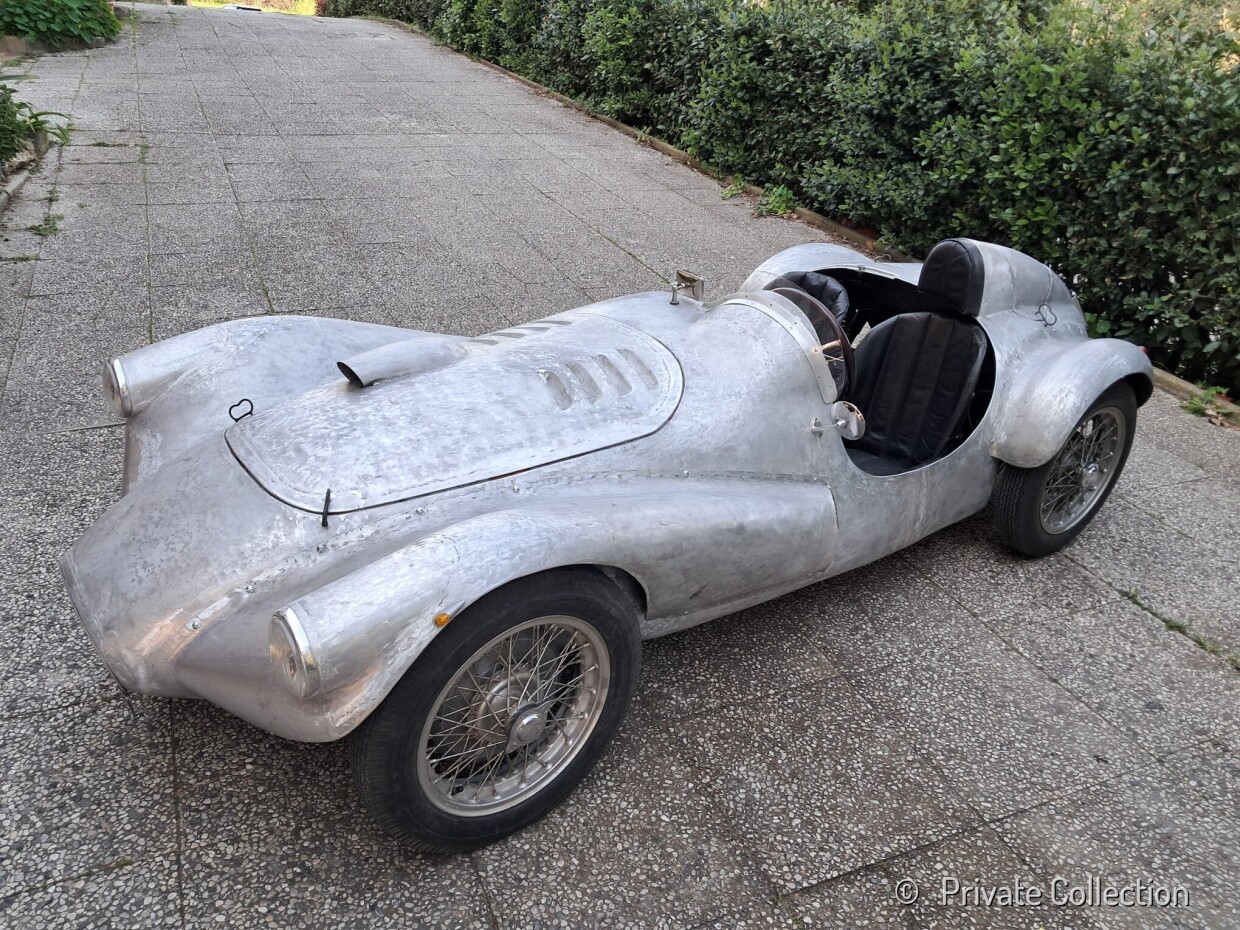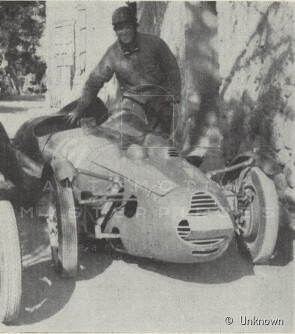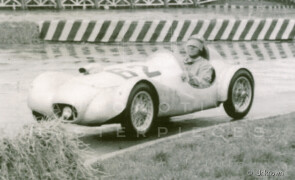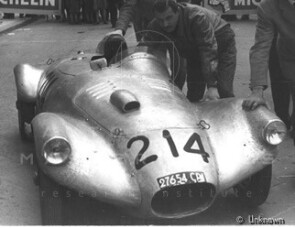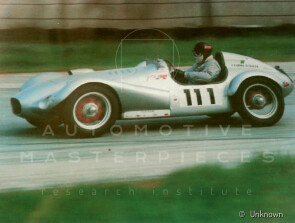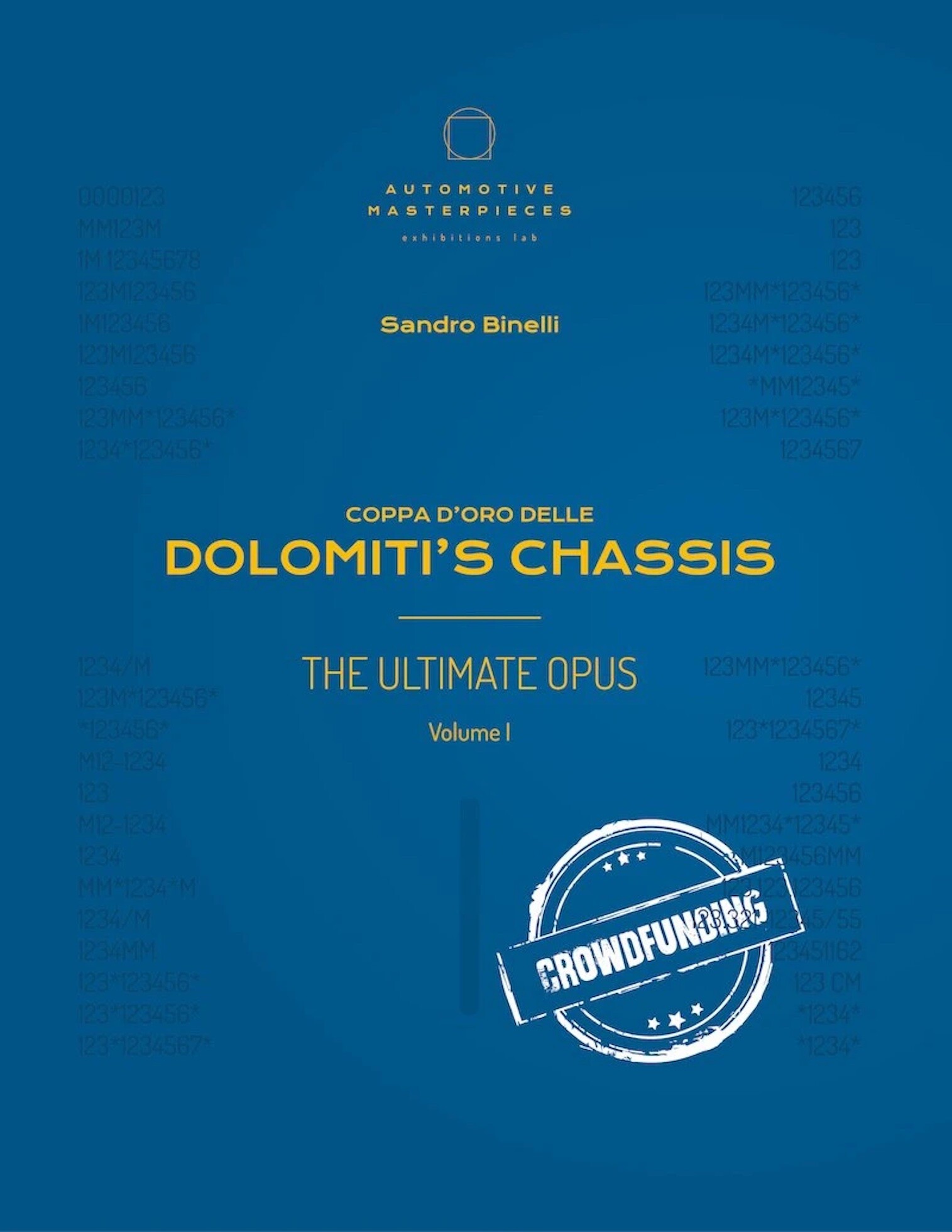
1949 Pasqualin GI-CO 750 Sport
ON/OFF
Why am I an Automotive Masterpiece?
G. Team cars
1953 Scuderia San Giorgio Autocorse (IT), 1956 Scuderia Cremona (IT)
“Testadoro” was the commercial name of a special cylinder head for the Fiat 500 engine, distributed by G.R. Casa dell’Auto Srl of Turin, and designed by engineer Arnaldo Roselli. The name Testadoro (i.e. golden head) derived from the bronze color of the alloy it was made from. The initials G.R. stood for Giusti (Giorgio, the owner) and Roselli. To promote their products, Giusti decided to build cars to compete in the Italian national sports category. These cars were assembled by hand, initially using the Fiat 500 as a base, but they evolved rapidly. The names given to the cars were nicknames of Giusti’s family members. The first car, named “Drin Drin” in 1947, retained the chassis and mechanicals (tuned to 660 cc) of the Fiat Topolino. It was followed by “Marinella” in 1948, which featured a cast-iron monobloc of original design, around 750 cc, with a new steel crankshaft and a cylinder head of Testadoro design but made from aluminum. With two single-barrel Weber carburetors, it produced 45 hp. The tubular frame was built by Gilco, and the streamlined barchetta body was crafted by Zagato. Further development led to the innovative “Daniela,” which used the Marinella engine, further modified to produce 48 hp at over 7,000 rpm. A new five-speed gearbox was installed, and the frame—still by Gilco—was an Isogrid spaceframe, an advanced multi-tubular structure. Once again, Zagato was responsible for the bodywork, which drew inspiration from the famous Alfa Romeo 158. The Daniela was unveiled to great fanfare in the motorsport press in early 1949, and four examples were built. The synergy of talents—Giusti and Roselli for the engine, Gilberto Colombo for the chassis, and Elio Zagato for the bodywork—produced a harmonious and rational result. Its most distinctive feature was its original construction philosophy: while remaining within the size regulations for sports cars under the sporting code, the vehicle was set up to drive like a single-seater. With only the driver aboard, the weight distribution was ideal for handling. To achieve this, the engine-transmission-differential assembly was shifted to the right, balancing the left-side driving position and resulting in a perfectly centered center of gravity. In 1949, following the untimely death of engineer Roselli, Giusti withdrew from racing activities, but the Testadoro cars continued to compete in the hands of new private owners. The Daniela chassis proved to be highly competitive in their class, and when original engine parts became unavailable, the engines were replaced. Cars that were probably unfinished at the time were also sold to private racers.
The Pasqualin GI-CO 750 Sport, chassis no. 5102455, rose like a phoenix from the ashes of a 1949 Testadoro Daniela bearing chassis no. 003. Among the (still few) Daniela models, it is distinguishable as one of only two featuring a single additional air intake. As a Daniela, the car competed in the Sports 750 cc category. Around 1951, it is believed the car underwent a transformation, for various reasons and circumstances: it may have required updates, or—given the end of support from G.R. as mentioned earlier—modifications may have become necessary. In this period, Luigi Zannini, a physician and racing driver, had a disagreement with his team, Patavium, and chose to continue independently. For him, Armando Pasqualin, specialist from Padua, reworked the Testadoro Daniela chassis no. 003, now fitted with a Giannini G1 engine, and renamed it GI-CO (for Giannini, the engine, and Colombo, the chassis). With Zannini, the car achieved its first successes, changed ownership and became the property of Baron Marco Magdalone, a member of an ancient noble family from Rende, known for their patronage of sports. Period press gave the Pasqualin GI-CO various names (the most used being simply Giannini, or Fiat Giannini), and the car competed extensively in the 1952, 1953, and 1954 seasons, almost always placing at the top of its class in the most important races. It also took a first in class at the 1953 Trofeo Internazionale della Sardegna. In 1954, the body shape underwent a significant transformation due to new racing regulations requiring integrated fenders; the elegant siluro-style silhouette was completely reworked, with riveted fenders joined to the central body to create a unified form. The front end, like the flanks, lost its “Alfetta”-inspired lines and was replaced by a much narrower, tapered nose. Over time, the bodywork’s details were modified several times to comply with evolving race regulations, to suit the needs of its various drivers, and as a result of minor accidents. In 1954 the GI-CO finally gained a second place overall both at the Coppa Michelin in Torino and the Circuito dell’Acciaio in Terni. That same year, Zannini secured second place overall in the 1954 “Campionato Trofeo Montagna – Gruppo Sport Internazionale.” In 1955, the car was purchased by its then-loyal driver Zannini, who raced it in two further events. The registration document identifies the car as “Zannini Giannini” (while the chronological record states “Giannini 650”), underscoring the strong driver-car association, and it also lists the new officially assigned chassis number, which is how we know it today: 5102455. In June 1955, the car changed hands again and was registered with Cremona license plates under the name of Maria Sguazzi, the wife of another racing driver, Pietro Bozzini, whose involvement in the car’s history raises further questions about its evolution. At the time, small-displacement sports cars—hand-built—often had complex stories and shared common parts such as Giannini engines or Gilco chassis. Their shapes evolved based on changes to racing regulations. Because of Bozzini’s close ties with the small builder-preparer Rodolfo Patriarca, the car eventually came to be associated with the Patriarca name—an attribution that still requires confirmation. In 1955, the GI-CO raced with Alfredo Tinazzo in the Trieste–Opicina hillclimb, finishing second in class, and then continued to race with Bozzini, who frequently brought it to podium finishes in many events. It also took part in the 1956 Mille Miglia, during which it was involved in an accident while running sixth in class: after an excellent start from Ravenna and passing the Forlì time control, while negotiating a turn near Pescara, the brakes failed. To avoid a worse outcome, the driver mounted a sidewalk and went off down a steep embankment, damaging the car and suffering minor injuries. There are no further race records until the 1960 Trofeo Lumezzane, with driver Martino Reraro, which is the last known event. In 1961, it was purchased by Augusto Piro and registered with Vicenza plates, which it still carries today. In 1968, it passed through the hands of well-known restorer Dino Cognolato, who sold it to a private collection, and in 1980 it took part in its first historic re-enactment event, the Coppa d’Italia. From the early 2000s to the present, the car has been featured in numerous specialized publications. Around 2015, it underwent a comprehensive restoration of the chassis and body, along with an engine built by the Giannini heirs in Rome.
